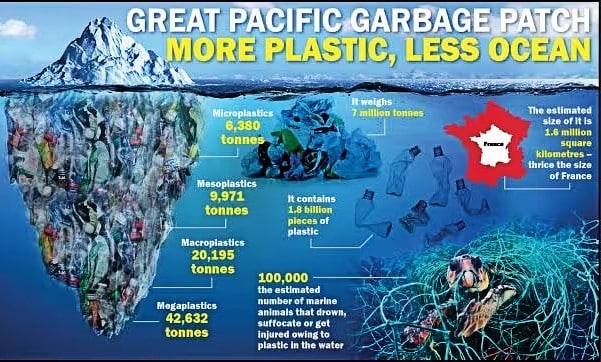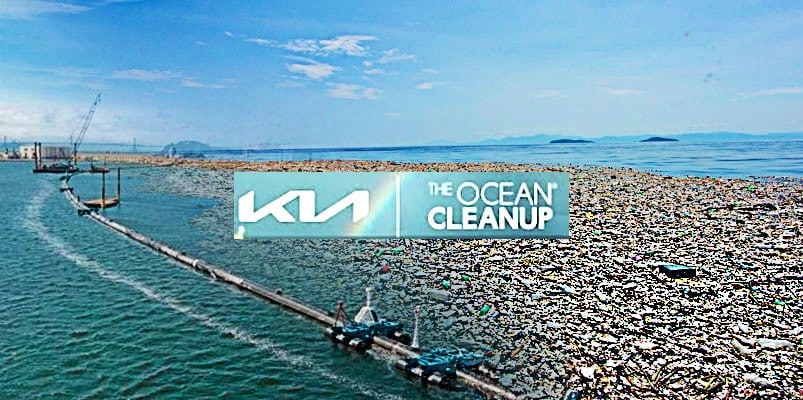South Korean carmaker Kia will use recycled plastic from a record 55-ton reclaimed trash from the Pacific Ocean in its future EV models, marking the company’s efforts for a sustainable mobility solutions provider. The impressive amount of plastic trash is recovered by Kia’s partner, The Ocean Cleanup.
The Ocean Cleanup is an international non-profit organization seeking to rid the world’s oceans of plastic. The team’s record-breaking catch was from the Pacific Ocean and landed at Victoria, Vancouver, Canada.
Commenting on this significant effort, a Kia executive noted that it shows how technology can drive sustainable solutions at scale. The senior VP further remarked that:
“Initiatives such as this one perfectly align with Kia’s transition to a sustainable mobility solutions provider and our Plan S strategy… by acting as a responsible corporate citizen.”
Kia has set ambitious net zero goals and taken steps to slash its carbon emissions.
Kia’s Sustainable Mobility Toward Net Zero
The Korean automaker has a strong focus on reducing its carbon emissions. In 2021, Kia declared to achieve carbon neutrality by 2045. To this end, the automaker aims to slash its carbon emissions by 97% compared to 2019 levels by 2045.
Kia will then look for ways to offset the remaining footprint to make its net emissions “zero” at all levels. The company plans to meet its net zero targets through its so-called 3Ss – Sustainable Energy, Sustainable Mobility, and Sustainable Planet.
 A big part of reaching its net zero or carbon neutrality targets, apart from transitioning to full-electric models, is investing in recyclable and eco-friendly materials and technology to lower its emissions and environmental impacts.
A big part of reaching its net zero or carbon neutrality targets, apart from transitioning to full-electric models, is investing in recyclable and eco-friendly materials and technology to lower its emissions and environmental impacts.
Such strategy includes the brand’s support of The Ocean Cleanup as reflected in the project’s record haul. Recycling of the reclaimed plastic will start shortly with Kia using some of the plastic trash in future models. Recycled plastics will become interior components of Kia’s future fully electric cars.
This move aligns with Kia’s commitment to provide sustainable mobility solutions that have a measurable impact on the environment. It’s something that the carmaker has been doing with its fabrics and carpets from recycled PET and bio-based leather. For instance, in its EV9 model, the car has floor carpet made from fishing nets.
The Ocean Cleanup’s 7-year partnership will give Kia more resources to recycle and use in its interior car parts.
Plastic Credits from the World’s Largest Floating Waste
The 55-ton record trash was recovered using The Ocean Cleanup’s System 002 extraction technology following a long voyage through the Great Pacific Garbage Patch (GPGP). It’s the planet’s biggest accumulation of floating waste, with a surface area of around 1.6 million sq. kilometers. In other words, that’s equal to more than 4x the size of Germany.

The company’s floating systems are designed to capture plastics of all sizes, from microplastics to massive wastes. Their modeling estimates that the cleanup team needs around 10 full-size systems to clear the GPGP.
By deploying fleets of extraction systems, The Ocean Cleanup projects can remove 90% of floating ocean plastic by 2040.
Right after it brought its recovered trash to shore with System 002, the team revealed its new System 03 technology. This new system is about 3x bigger than its predecessor. So apparently, it can capture more plastic waste at lower costs (per kilo of trash removed).
The System 03 extraction also has a more sophisticated environmental monitoring and safety technology designed to protect marine life.
The Ocean Cleanup said it will offset all carbon emissions from its System 002 campaign. The team is also working with Maersk in experimenting with low-carbon fuels for their support vessels.
Announcing their future plans, Nisha Bakker, a director at The Ocean Cleanup, said that they’re aiming to remove 50% of the GPGP every 5 years, but they can’t do this huge task alone. With that, Bakker further noted that:
“Committed and valued partners, and particularly our global partner Kia, remain essential for The Ocean Cleanup to bring our shared ambitions of plastic-free oceans to reality.”
Their innovative and giant effort of recovering plastics from the oceans in partnership with Kia can make them eligible for earning plastic credits. Each credit is equal to a ton of plastic waste that would otherwise have not been collected or recycled.
They can then leverage plastic credits to address their sustainability concerns or as part of their net zero commitments.
Kia’s commitment to repurposing 55 tons of Pacific Ocean plastic recovered by The Ocean Cleanup into future EV models symbolizes a pivotal shift toward a more sustainable automotive industry. This initiative scores big both in protecting our oceans and eliminating plastic waste.

